My favourite painting: David Cannadine
'...more memorable and exquisite than his celebrated Madonnas.'
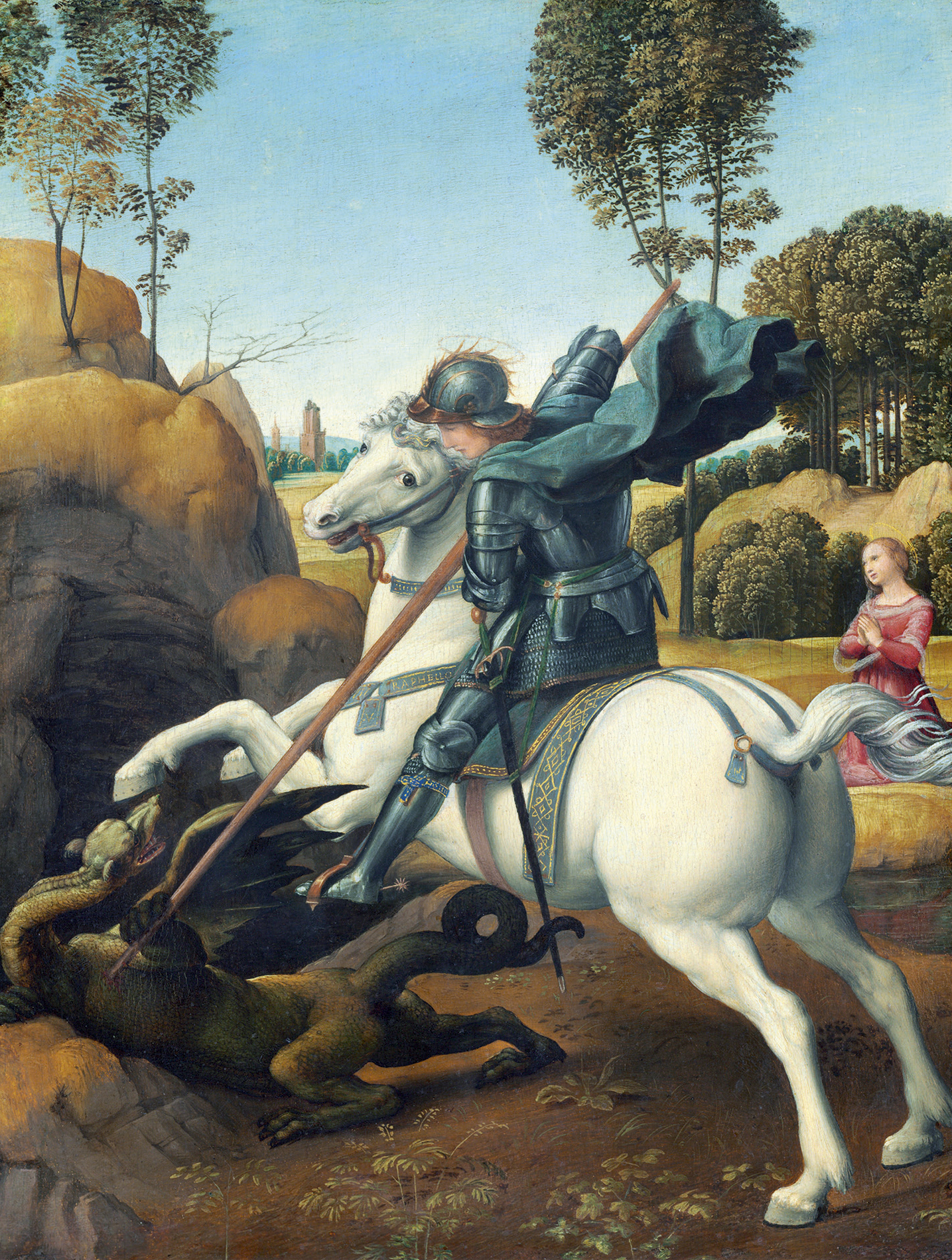

Saint George and the Dragon, about 1506, by Raphael (1483–1520), 11¼in by 8½in, National Gallery of Art, Washington DC
David Cannadine says: It was during the early 1970s that I have first visited the National Gallery of Art in Washington DC and encountered Raphael’s masterpiece, which seemed to me more memorable and exquisite than his celebrated Madonnas. A quarter of a century later, I found myself writing the life of Andrew W. Mellon, the Pittsburgh banker and industrialist who founded and funded the National Gallery of Art and also donated to it his own collection of paintings. In 1930–31, that collection was fabulously enhanced when Mellon, at that time Secretary to the United States Treasury, acquired some of the greatest paintings from the Hermitage, sold off by the Soviets, who were desperate for dollars. This was one of the finest of them and, during the course of my researches, it was thrilling to discover the documentation of this extraordinary sale—an appropriate transaction for such an extraordinary work of art.
John McEwen comments on Saint George and the Dragon: Raphael (Santi) was born in Urbino, son of Giovanni Santi, a court painter to Frederico da Montelfeltro, Duke of Urbino. Urbino, under Duke Frederico, became a centre of humanist scholarship and artistic excellence. Raphael was familiar with this world when orphaned at 11. He entered the workshop of the Umbrian master Pietro Perugino and is referred to as a master himself by 1500, the earliest mention of him, witness to his renown as a prodigy. With Leonardo and Michelangelo, he formed the artistic triumvirate of the High Renaissance, a stylistic period that barely survived his premature and much lamented death.
This portable painting on wood was commissioned by Duke Frederico’s successor and Raphael’s patron, Guidobaldo da Montelfeltro, as a gift for the emissary, Sir Gilbert Talbot, to present to Henry VII of England, who had made Guidobaldo a member of the English Order of the Garter. St George is the order’s patron saint. Raphael displayed the garter on the saint’s leg. It is identifiable by ‘HONI’, first word of its motto (Honi soit qui mal y pense—Disgraced be he who thinks ill of it). Like his father, Guidobaldo was a condottiero or warlord. Henry’s gift was to salute the Duke’s cultural and military status rather than to thank him for a specific favour.
The picture was sold during the Commonwealth in one of the sales of the Royal Collection. Catherine the Great subsequently bought it and, until its sale by the Soviets to the American collector Andrew Mellon in 1931, it was one of the most revered pictures in the Imperial Hermitage Collection.
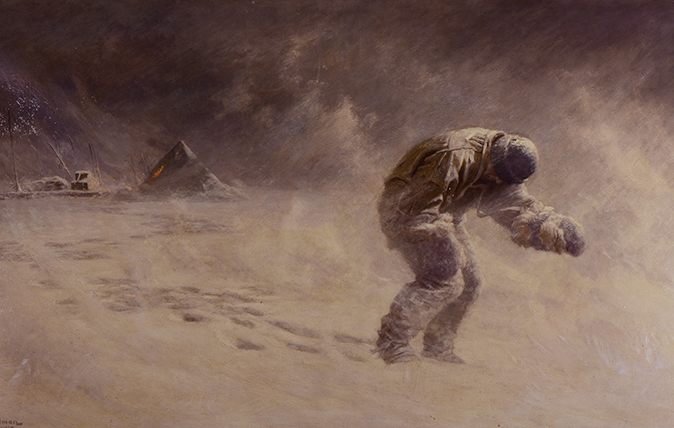
My favourite painting: Simon Hart
'For any artist to create such drama and emotion from a scene of almost total whiteout is a great skill.'
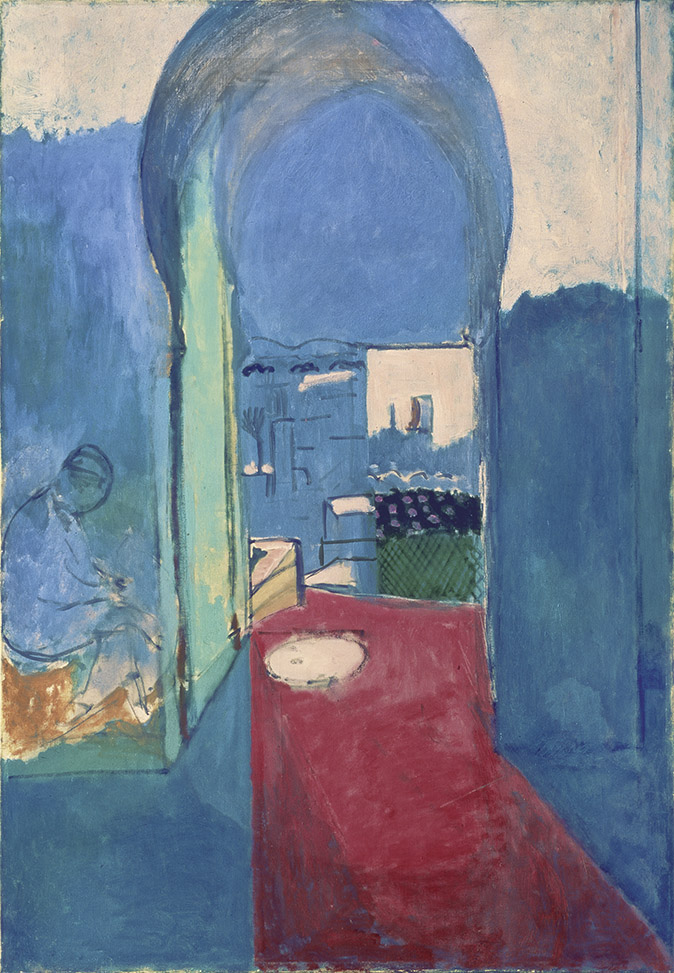
My favourite painting: Lachlan Goudie
'It’s a series of prompts, unlocking the viewer’s imagination'
Sign up for the Country Life Newsletter
Exquisite houses, the beauty of Nature, and how to get the most from your life, straight to your inbox.
Country Life is unlike any other magazine: the only glossy weekly on the newsstand and the only magazine that has been guest-edited by HRH The King not once, but twice. It is a celebration of modern rural life and all its diverse joys and pleasures — that was first published in Queen Victoria's Diamond Jubilee year. Our eclectic mixture of witty and informative content — from the most up-to-date property news and commentary and a coveted glimpse inside some of the UK's best houses and gardens, to gardening, the arts and interior design, written by experts in their field — still cannot be found in print or online, anywhere else.
-
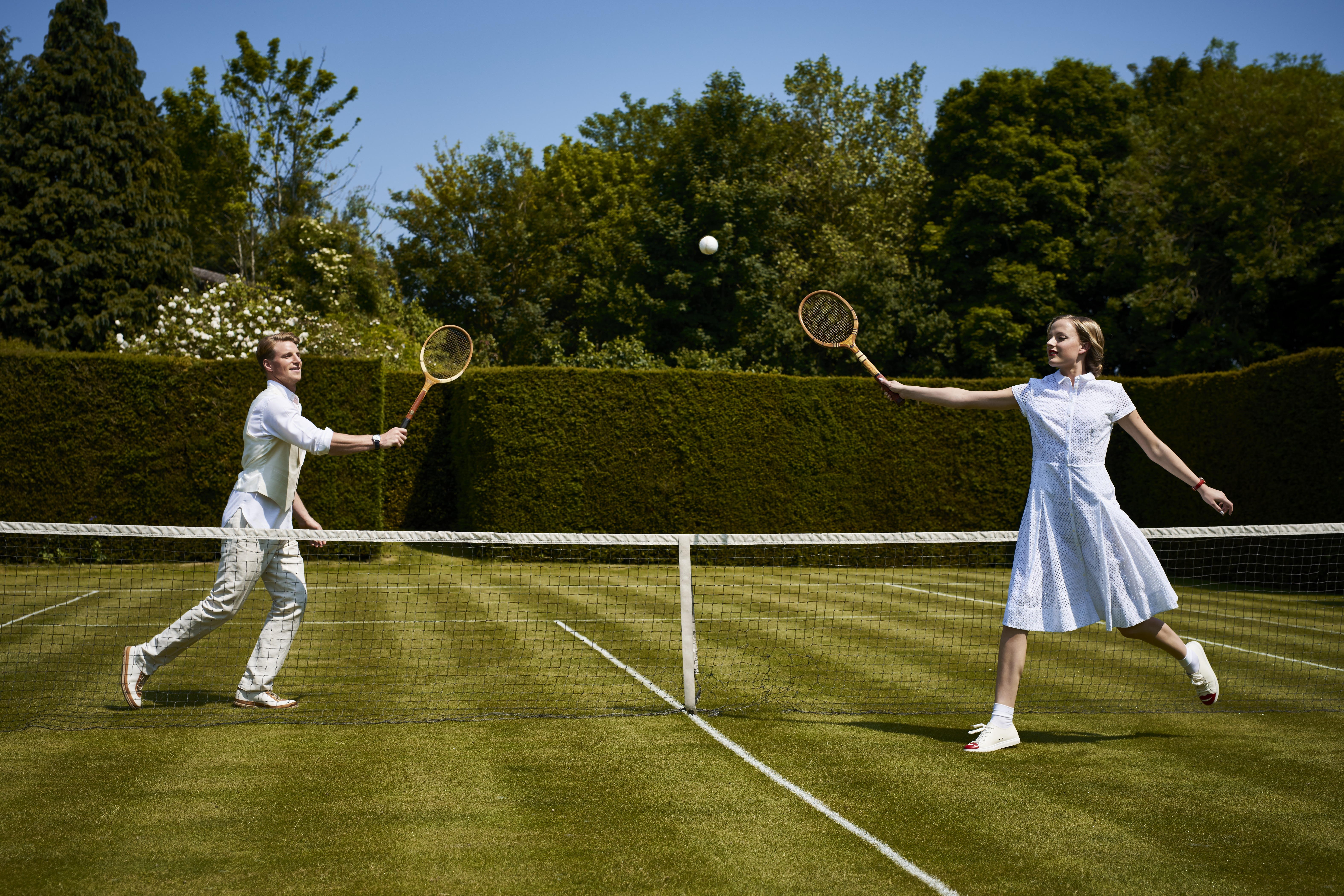 New balls please: Eddie Redmayne, Anna Wintour and Laura Bailey on the sensory pleasures of playing tennis
New balls please: Eddie Redmayne, Anna Wintour and Laura Bailey on the sensory pleasures of playing tennisLittle beats the popping sound and rubbery smell of a new tube of tennis balls — even if you're a leading Hollywood actor.
By Deborah Nicholls-Lee
-
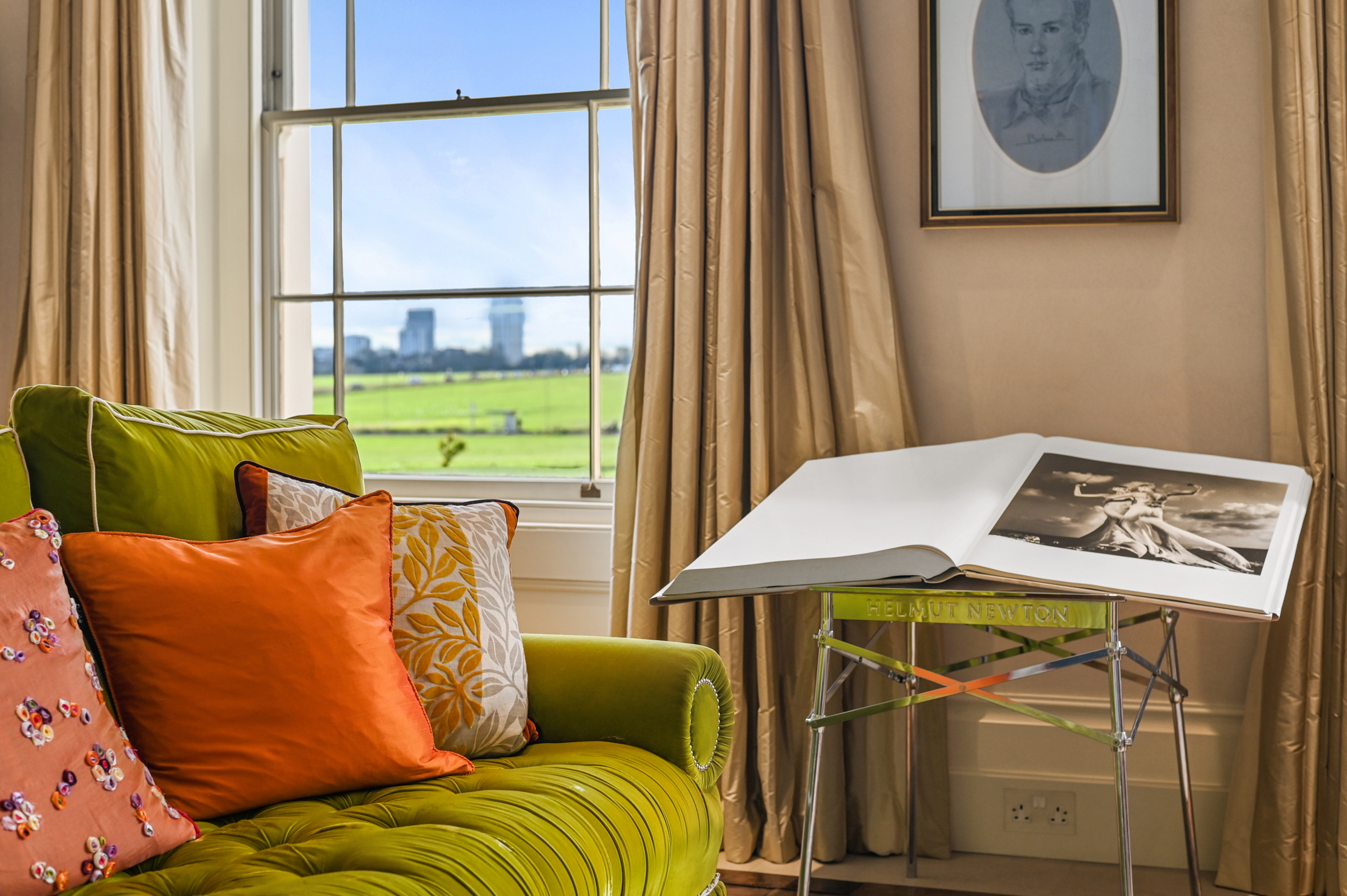 A rare opportunity to own a family home on Vanbrugh Terrace, one of London's finest streets
A rare opportunity to own a family home on Vanbrugh Terrace, one of London's finest streetsThis six-bedroom Victorian home sits right on the start line of the London Marathon, with easy access to Blackheath and Greenwich Park.
By James Fisher
-
 'As a child I wanted to snuggle up with the dogs and be part of it': Alexia Robinson chooses her favourite painting
'As a child I wanted to snuggle up with the dogs and be part of it': Alexia Robinson chooses her favourite paintingAlexia Robinson, founder of Love British Food, chooses an Edwin Landseer classic.
By Charlotte Mullins
-
 The Pre-Raphaelite painter who swapped 'willowy, nubile women' for stained glass — and created some of the best examples in Britain
The Pre-Raphaelite painter who swapped 'willowy, nubile women' for stained glass — and created some of the best examples in BritainThe painter Edward Burne-Jones turned from paint to glass for much of his career. James Hughes, director of the Victorian Society, chooses a glass masterpiece by Burne-Jones as his favourite 'painting'.
By Charlotte Mullins
-
 'I can’t look away. I’m captivated': The painter who takes years over each portrait, with the only guarantee being that it won't look like the subject
'I can’t look away. I’m captivated': The painter who takes years over each portrait, with the only guarantee being that it won't look like the subjectFor Country Life's My Favourite Painting slot, the writer Emily Howes chooses a work by a daring and challenging artist: Frank Auerbach.
By Toby Keel
-
 My Favourite Painting: Rob Houchen
My Favourite Painting: Rob HouchenThe actor Rob Houchen chooses a bold and challenging Egon Schiele work.
By Charlotte Mullins
-
 My Favourite Painting: Jeremy Clarkson
My Favourite Painting: Jeremy Clarkson'That's why this is my favourite painting. Because it invites you to imagine'
By Charlotte Mullins
-
 The chair of the National Gallery names his favourite from among the 2,300 masterpieces — and it will come as a bit of a shock
The chair of the National Gallery names his favourite from among the 2,300 masterpieces — and it will come as a bit of a shockAs the National Gallery turns 200, the chair of its board of trustees, John Booth, chooses his favourite painting.
By Toby Keel
-
 'A wonderful reminder of what the countryside could and should be': The 200-year-old watercolour of a world fast disappearing
'A wonderful reminder of what the countryside could and should be': The 200-year-old watercolour of a world fast disappearingChristopher Price of the Rare Breed Survival Trust on the bucolic beauty of The Magic Apple Tree by Samuel Palmer, which he nominates as his favourite painting.
By Charlotte Mullins
-
 My favourite painting: Andrew Graham-Dixon
My favourite painting: Andrew Graham-Dixon'Lesson Number One: it’s the pictures that baffle and tantalise you that stay in the mind forever .'
By Country Life